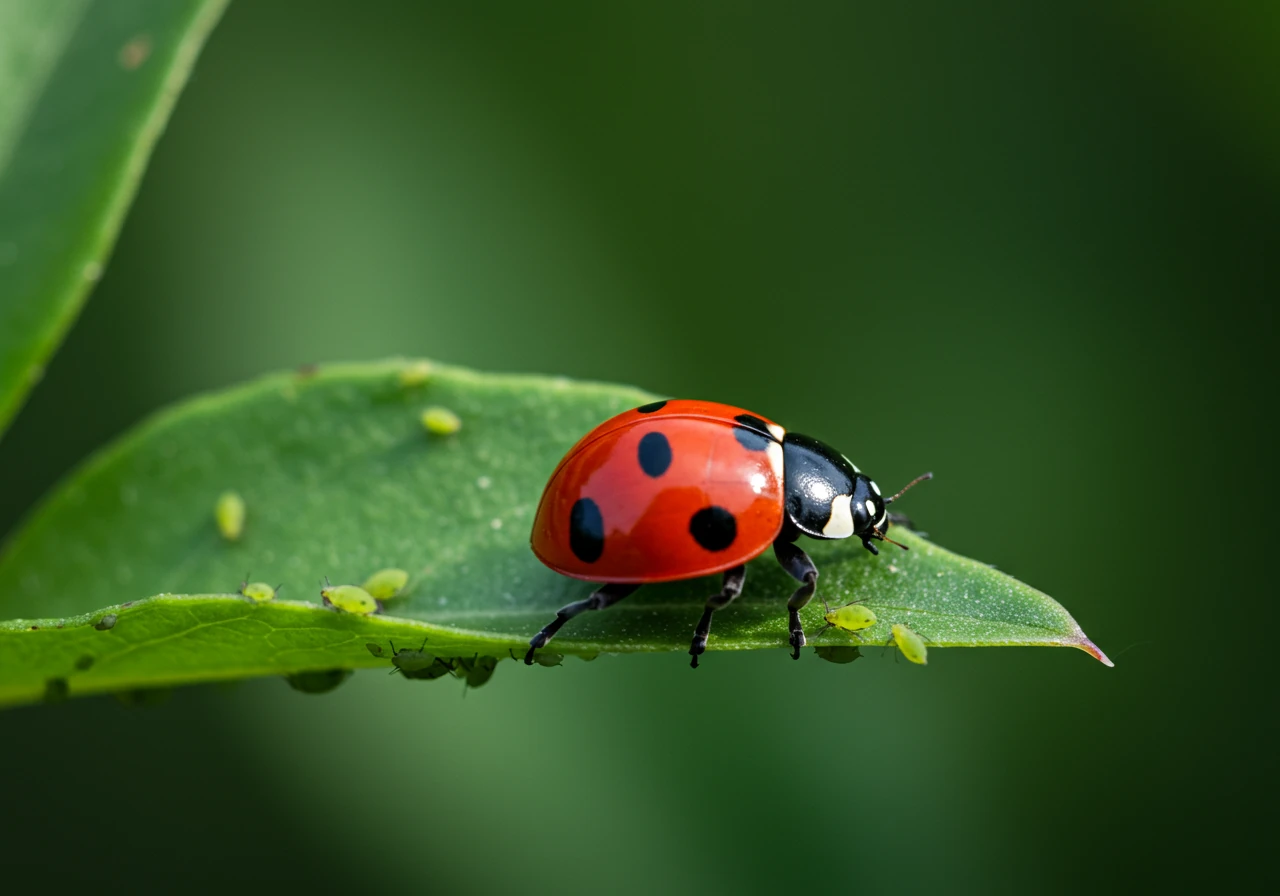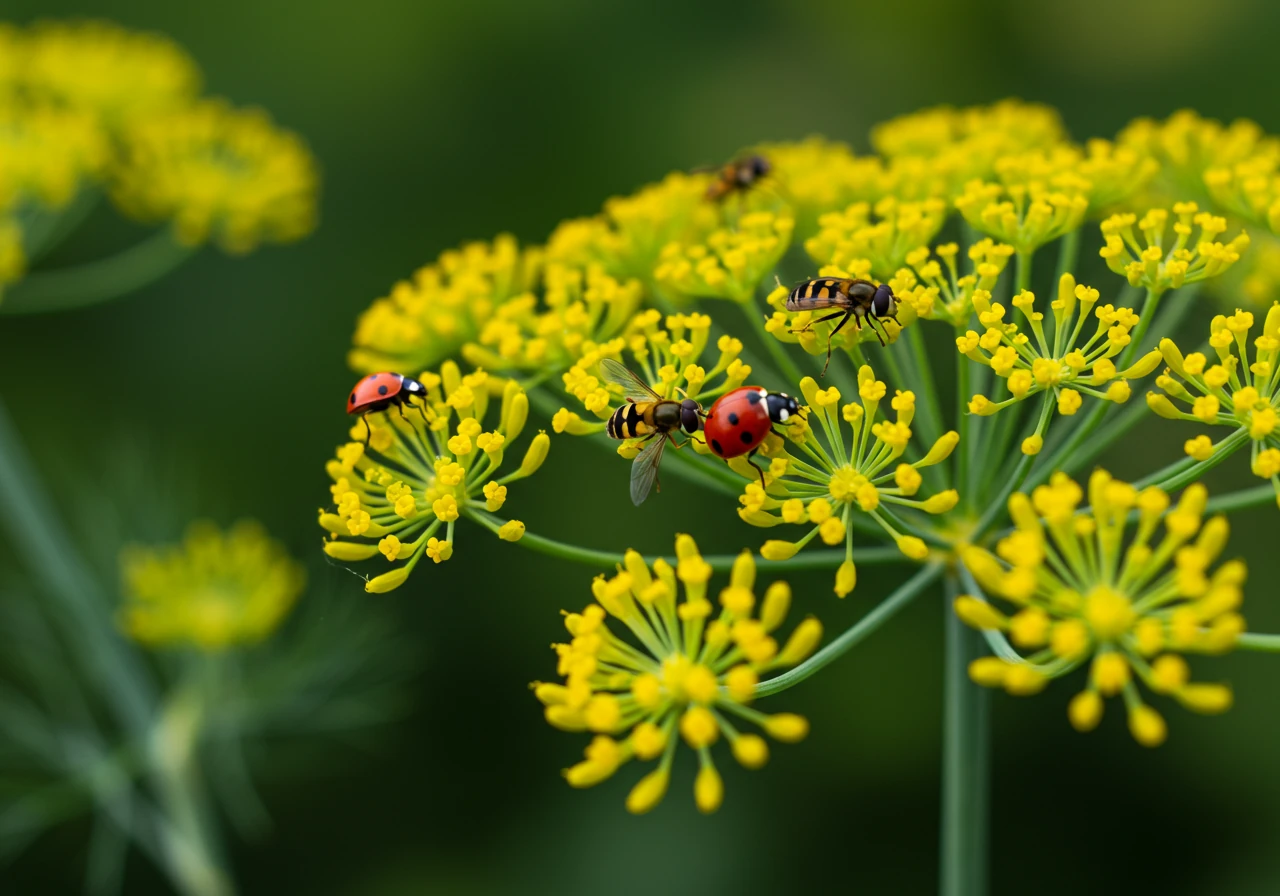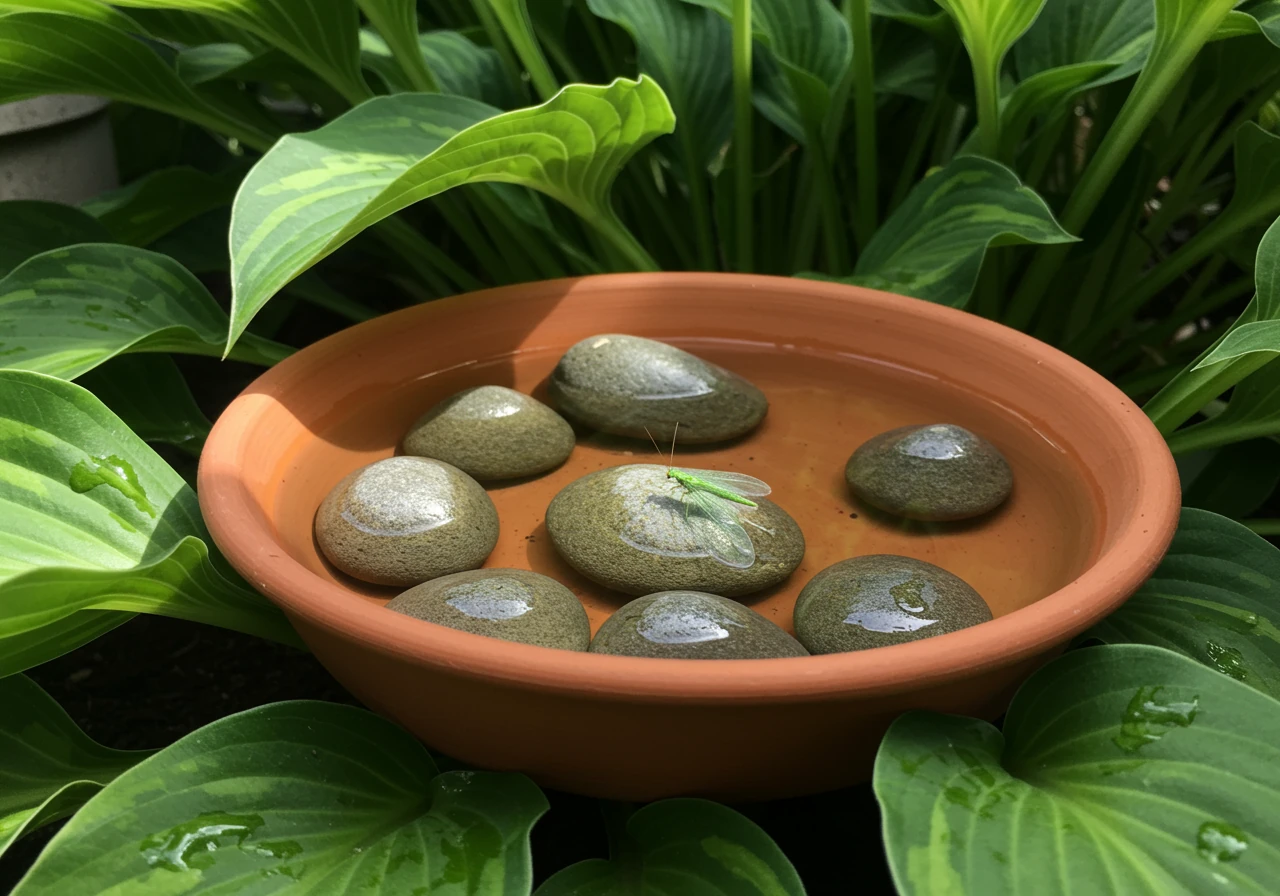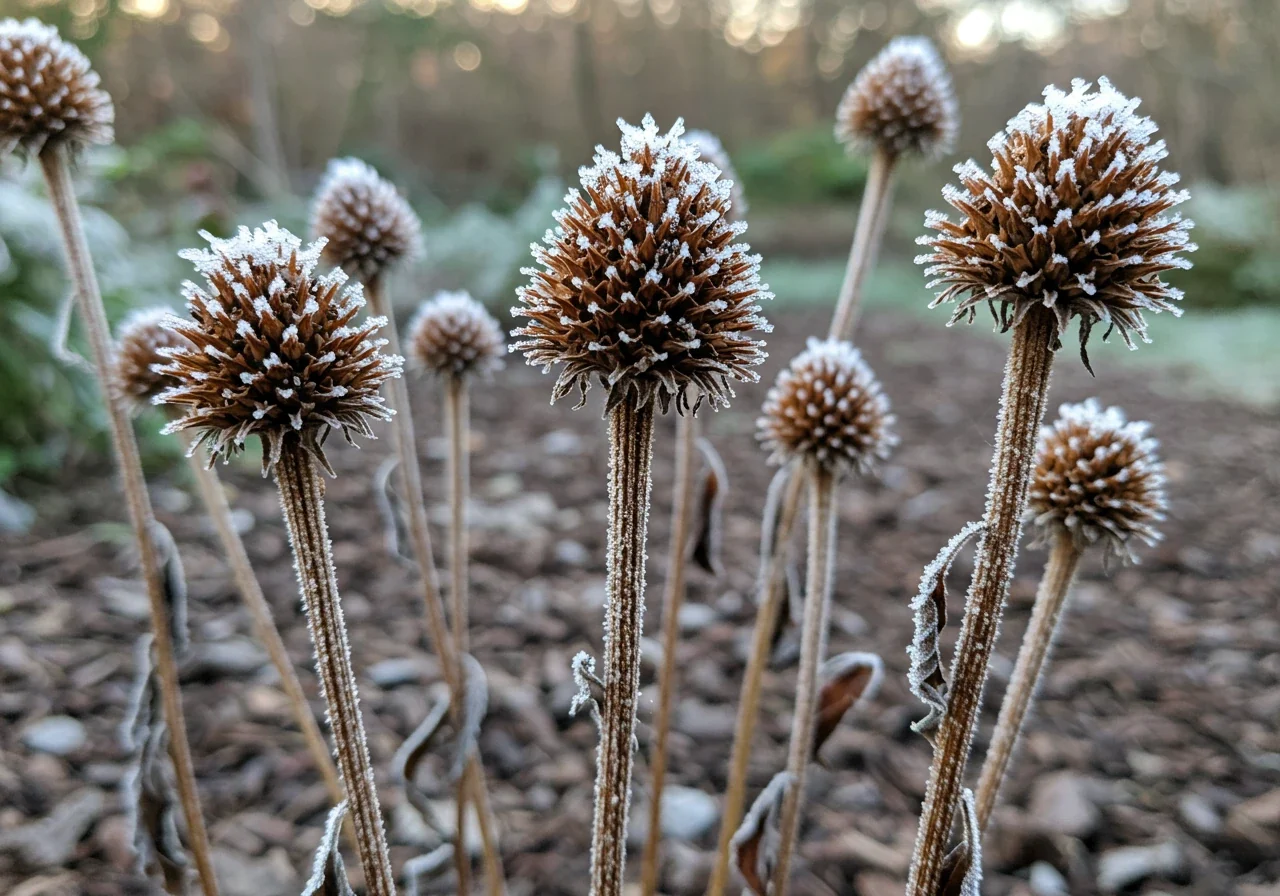Metcalfe Gardens: Lure Good Bugs, Cut Pests Summer
Quick Guide to a Pest-Resistant Metcalfe Garden:
- Identify beneficial insects (ladybugs, lacewings) vs. common pests (aphids, Japanese beetles).
- Plant an "insectary" with diverse flowers (dill, cosmos, yarrow) for continuous blooms.
- Provide water sources (shallow dishes with pebbles) and shelter (leaf litter, rocks).
- Avoid broad-spectrum pesticides; practice patience and observation.
- Focus on healthy soil and plants through proper garden maintenance.
Ready for a healthier garden? Request a quote today!
Introduction: Buzz Off Pests! Welcome Helpful Bugs to Your Metcalfe Garden This Summer
Hey there, Metcalfe gardeners! Dreaming of lush flower beds and a bountiful veggie patch this summer? We all are! But let's be honest, sometimes it feels like uninvited guests (*cough* aphids *cough* spider mites) are treating our precious plants like an all-you-can-eat buffet. Before you declare war with harsh chemicals, what if there was a more natural, garden-friendly way to handle these pesky party crashers?
Good news – there is! Meet the *real* VIPs of the garden: beneficial insects. Think of them as your personal, six-legged security team, working hard across Ottawa, from Metcalfe right over to neighbouring spots like Greely and Osgoode. These aren't the villains munching your marigolds; they're the heroes feasting on the *actual* pests. Need help managing your green space? Check out our professional services.
This summer, let's focus on smart landscaping and creating a welcoming habitat for these helpful critters. By encouraging ladybugs, lacewings, and other garden allies, you can build a balanced ecosystem right in your backyard. It’s nature’s own pest control service! Get ready to learn how to identify the good bugs, attract them to your space, and tell those unwanted pests to buzz off – for good!
Friend or Foe? Identifying Ottawa's Garden Critters

Okay, gardener, let's talk creepy crawlies! You head out to admire your blooming beauties or check on those tomato plants, and you spot… *something*. Is it a helpful garden buddy or a villain plotting to munch your marigolds? It can honestly be tricky to tell sometimes! Ottawa gardens, whether you're tending flower beds in Barrhaven or nurturing veggies in Greely, are teeming with life – both the good and the not-so-good. Learning to spot the difference is your secret weapon for a thriving garden.
Meet Your Garden Allies (The Good Guys!):
These insects are the superheroes of your backyard ecosystem, working hard to keep pests in check. Look out for:
- Ladybugs: These famous red or orange beetles with black spots are rockstars. But don't forget their larvae! They look like tiny, bumpy alligators and have *huge* appetites for aphids. Seriously, they're voracious eaters! You can find more info about local insects from the Ottawa Field-Naturalists' Club.
- Lacewings: You might spot the adults – delicate, pale green insects with beautiful, transparent wings that look like lace. Their larvae, however, are the real pest destroyers. Often called "aphid lions," these little predators gobble up aphids, mites, thrips, and insect eggs.
- Hoverflies (Syrphid Flies): These clever mimics look a lot like small bees or wasps, buzzing around flowers. But look closely – they only have one pair of wings (bees have two) and they hover like tiny helicopters. While the adults sip nectar, their maggot-like larvae patrol your plants, devouring aphids.
Know Your Garden Foes (The Unwanted Guests):
These are the critters causing damage and giving gardeners headaches across Ottawa:
- Aphids: The tiny terrors! These small, pear-shaped sap-suckers (often green, black, yellow, or pink) cluster on tender new growth, stems, and buds. They weaken plants, distort leaves, and can spread disease. So annoying!
- Slugs and Snails: Oh, the slime trails! These mollusks love moist, shady spots and come out at night or on damp days to chew ragged holes in leaves and flowers, especially favorites like hostas and lettuce. If your garden beds stay soggy, improving water flow is crucial – a topic explored in managing water with Metcalfe rain gardens & clay soil drainage.
- Japanese Beetles: These shiny, metallic green and copper beetles are notorious skeletonizers, chewing leaves down to the veins. They swarm in mid-summer and aren't picky, munching on roses, grapes, beans, and many other landscape plants. Check the Canadian Food Inspection Agency for identification tips.
Need help identifying pests or boosting beneficials?
Get Professional Garden CareSmart Pest Control: Thinking Like a Detective
Before you declare all-out war, let's talk about *Integrated Pest Management* (IPM). It sounds fancy, but it just means using smart, common-sense strategies to manage pests, starting with the most earth-friendly options. A big part of IPM is *biological control* – basically, letting the good bugs take care of the bad bugs for you!
IPM isn't just about bugs fighting bugs, though. It also includes:
- Cultural Practices: Simple things like choosing disease-resistant plant varieties, rotating where you plant veggies each year, watering correctly (usually deep watering less often is better), and keeping your garden tidy. Proper yard maintenance, like utilizing fall cleanup services get your Metcalfe yard ready, removes overwintering spots for many pests. Even focused efforts like a Marionville garden clean up service can disrupt pest populations.
- Physical Tactics: Sometimes the best approach is hands-on! This could mean squishing aphids with your fingers (wear gloves!), hand-picking Japanese beetles into a bucket of soapy water (surprisingly effective!), or using barriers like row covers.
- Habitat Help: Making your garden inviting for beneficial insects is key. Applying organic mulch, as detailed in Metcalfe Mulch Magic: Expert Installation Tips, helps suppress weeds and provides shelter for ground beetles and other predators. Ensuring you use the proper Metcalfe garden tools for clay soil & fall and keeping them clean also prevents spreading diseases between plants – another simple IPM step!
We plan to provide a handy comparison guide soon to make identifying friend from foe even easier! The main takeaway? Observe first! Identify who’s actually causing damage before you act. Building a healthy, balanced garden ecosystem takes time, and sometimes a little professional guidance from landscape maintenance services can make all the difference.
Roll Out the Welcome Mat: Planting an Insectary Garden in Metcalfe & Beyond

Alright, let's turn your Metcalfe garden into a buzzing haven for the good guys! We've identified who the helpful insects are, now how do we convince them to move in and stay awhile? By creating an *insectary garden* – basically, a bed and breakfast designed specifically for beneficial bugs. Think of it as planting a welcome sign that reads: "Pest-Eaters Welcome Here!"
Planting an insectary doesn't require a huge amount of space. Even a dedicated corner, a border along a fence, or strategically placed pots can make a big difference. The goal is simple: provide food (nectar and pollen) and shelter for your six-legged allies throughout the growing season.
Choosing the Right Plants: The Beneficial Bug Buffet
The key is *variety* and *continuous bloom*. You want something flowering from spring through fall, ensuring there's always food available for adult beneficials, whose larvae often do the heavy lifting of pest control. Here are some plant types that work wonders in our Ottawa climate (Zone 5a/5b) and are favourites of helpful insects:
- Tiny Flowers are Tops: Many beneficial insects, like parasitic wasps and hoverflies, have small mouths. They love plants with clusters of tiny flowers. Think:
- Herbs: Dill, parsley, cilantro (let some go to flower!), fennel, thyme, oregano.
- Perennials: Yarrow (Achillea), Sweet Alyssum (often grown as an annual here), Queen Anne's Lace (or relatives like Ammi majus).
- Composite Flowers (Daisy-like): These offer a convenient "landing pad" and easy access to nectar and pollen for ladybugs, lacewings, and hoverflies.
- Perennials: Coneflowers (Echinacea), Black-eyed Susans (Rudbeckia), Asters, Goldenrod (Solidago - great native!).
- Annuals: Sunflowers (choose branching types for longer bloom), Cosmos, Zinnias.
- Native Plants Power: Consider adding Ontario native species! These plants are already adapted to our local conditions and provide excellent food and habitat for native beneficial insects. Examples include Wild Bergamot (Monarda fistulosa), Joe Pye Weed (Eutrochium maculatum), and various Milkweeds (Asclepias species – bonus: helps Monarch butterflies!). You can find native plant suppliers through organizations like Ontario Native Plants.
Bloom All Season Long
Aim for a mix of plants with different flowering times. Early spring blooms (like Alyssum) feed the first arrivals, while mid-summer favourites (like Coneflowers and Dill) and late-season stars (like Asters and Goldenrod) keep them happy until frost. Keep an eye on bloom times in your specific area – a plant might bloom slightly earlier in sunnier spots in Richmond compared to shadier areas in Osgoode.
Dealing with Our Soil
Many gardens around Metcalfe and Ottawa deal with clay soil. While some natives tolerate it well, many plants prefer well-drained conditions. This is where good ground preparation comes in. Before you plant your insectary haven, investing time in proper soil preparation by adding compost or other organic matter can make a world of difference to plant health, making them better hosts for your beneficial bugs. Healthy plants are resilient plants!
Putting it Together (Insectary Garden Basics)
Select a Sunny Spot & Prepare the Soil
Most insectary plants prefer full sun (6+ hours daily). Clear the area of weeds and grass. Amend the soil with compost, especially if you have heavy clay, to improve drainage and fertility. Consider a thorough Metcalf property cleanup service if starting fresh.
Choose a Diverse Plant Mix
Select plants from the categories mentioned above (tiny flowers, composite flowers, natives). Aim for variety in flower shape, color, and bloom time (spring, summer, fall). Grouping plants in small clusters can be more attractive to insects than single specimens.
Plant, Water, and Avoid Pesticides
Arrange plants considering their mature height (taller ones in back). Water regularly after planting until established. Most importantly: avoid using broad-spectrum pesticides in or near your insectary garden, as they will kill beneficial insects. Regular upkeep, perhaps simplified with an Ottawa yard cleanup service, ensures the space remains inviting.
Maintaining the area is also important. While leaving some leaf litter offers overwintering habitat, ensuring the surrounding area is generally tidy with help from an Ottawa property cleanup service prevents unwanted pests from finding excessive refuge nearby. Even focused efforts like a Marionville yard cleanup service can help keep the balance right. Regular upkeep, potentially simplified with an city yard cleanup service, ensures your insectary remains an inviting space for allies, not just pests.
Creating an insectary garden is a fantastic way to boost your garden's health naturally. It’s a rewarding landscaping project that supports local ecosystems. If you'd like to know more about how we incorporate these principles into our work, feel free to check out our About Us page!
More Than Just Flowers: Creating a Five-Star Habitat for Helpful Bugs


Okay, plant pals, we've rolled out the welcome mat with gorgeous flowers, but creating a true VIP lounge for beneficial bugs involves more than just a pretty buffet. Think of it this way: you wouldn't invite guests over without offering them a drink or a place to crash, right? Our tiny garden allies need the same creature comforts! Providing these essentials turns your Nepean backyard or Barrhaven balcony garden into a true five-star habitat.
Water: The Essential Sip
Like us, bugs need water, especially during Ottawa's hot, dry summer spells. But they can't exactly turn on a tap!
- Shallow Water Sources: A simple bird bath with rocks or pebbles sticking out of the water provides a safe landing spot for insects to drink without drowning. Even a shallow dish filled with pebbles and water works wonders. Remember to change the water regularly to keep it fresh and prevent mosquito larvae.
- Damp Spots: Healthy soil naturally holds moisture. Good soil preparation techniques that incorporate organic matter not only benefit your plants but also create micro-climates with damp soil where beneficials like ground beetles can find a drink.
Shelter: A Place to Hide and Hang Out
Beneficial insects need places to escape predators, bad weather, and the midday sun.
- Leave the Leaves (Strategically!): While a full-scale property clean up keeps things tidy, resist the urge to make your garden *spotless*, especially in the fall. A layer of fallen leaves provides crucial shelter for ladybugs, predatory beetles, and others. Maybe leave the leaves *under* shrubs or in garden beds, while keeping pathways clear.
- Rock On: A small rock pile or even just a few strategically placed flat stones offer cool, damp hiding spots.
- Wood Works: A log pile or even just a few old branches tucked away can provide valuable habitat. Think rustic charm!
- Mulch Magic: Applying organic mulch is fantastic for suppressing weeds and retaining moisture, but it also offers excellent shelter for ground-dwelling predators. Proper mulching and edging can define garden spaces while boosting habitat.
Overwintering: The Winter Condo
Many beneficial insects need safe places to spend the cold Ottawa winter.
- Standing Room Only: Don't cut back *all* your perennial stems in the fall. Hollow stems (like those from coneflowers or ornamental grasses) are prime overwintering real estate for some species. Wait until spring to tidy these up.
- Leaf Litter Again: Yes, it's *that* important! Many beneficials hibernate in the leaf litter layer.
- Bunched Grasses: Ornamental grasses left standing provide excellent winter cover.
The Big One: Nix the Nasty Chemicals
This is *critical*. Broad-spectrum pesticides are like bug bombs – they kill *everything*, including the ladybugs munching your aphids and the lacewings laying eggs. Using these chemicals completely undermines your efforts to attract beneficials.
- Tolerate Minor Damage: Often, beneficial insects will arrive to control pests if you give them a chance. A few nibbled leaves aren't the end of the world!
- Targeted, Gentle Approaches: If pests get out of hand, try physical removal first (squishing, water sprays). If you *must* spray, use targeted, less harmful options like insecticidal soap or horticultural oil, applying them carefully only where needed and preferably in the evening when beneficials are less active. *Always* read and follow label directions precisely.
- Healthy Plants Resist Pests: Focus on building healthy soil and choosing the right plants for your conditions. Strong plants are less susceptible to pests and diseases. Consistent, thoughtful garden maintenance is key to plant health.
Lawn Logic
Think about the typical suburban lawn. While neat, a vast expanse of perfectly manicured turf offers very little food or shelter for beneficial insects. Consider reducing lawn size and incorporating more diverse plantings through a new garden install, adding layers of habitat. If maintaining a healthy garden that supports beneficials feels overwhelming, consider seeking help. A professional city garden maintenance service can help manage your space using eco-friendly practices that keep both your plants and your helpful bugs happy. Find us on Google!
By providing food, water, shelter, and a safe environment, you're not just gardening; you're cultivating a living ecosystem that works *for* you!
Summer Pest Patrol: Letting Your Beneficial Buddies Do the Work
Okay, garden detectives, grab your magnifying glasses (or just your regular glasses)! We’ve talked about identifying the good guys and rolling out the welcome mat. Now comes the crucial part: becoming a savvy observer in your own backyard oasis, whether you're in Kars, Russell, or anywhere else across Ottawa. This is your *Summer Pest Patrol*, but instead of being the lone sheriff, you're deputizing your beneficial buddies!

Become a Regular Sherlock Holmes of the Soil:
The key is consistent, *casual* observation. You don't need to spend hours – just make it a habit to stroll through your garden every few days.
- Look Up, Look Down, Look All Around: Check the undersides of leaves (aphids love hiding there!), inspect new growth, examine flower buds, and even peek around the base of plants.
- Early Morning/Late Evening: These are often prime times to spot certain critters, both good and bad. Slugs might be out after rain, while ladybugs might be warming up in the morning sun.
- What Am I Seeing?: Don't just look for damage. Actively search for beneficials too! Are ladybug larvae hunting? Are hoverflies sipping nectar? Seeing the good guys *is* progress! Keep notes if it helps – "Saw 3 ladybugs on the roses, aphids seem fewer than last week."
Patience, Young Grasshopper (or Gardener!)
This is HUGE. You spot a few aphids? Don't panic! Nature often needs a little time to catch up. Your beneficial insect populations might be building. Give them a week or two to find the pest buffet you've inadvertently provided. Spraying too soon wipes out your allies just as they're arriving. Trusting nature takes a little faith, just like trusting us with your information requires confidence in our Privacy Policy.
Knowing When to *Actually* Worry: Action Thresholds
An "action threshold" is simply the point where pest damage becomes unacceptable *to you* and intervention might be needed. This isn't a fixed number!
- Minor Damage is Okay: A few chewed leaves on a large shrub? Probably fine. Your prize-winning rose buds covered in aphids? Maybe closer to your threshold.
- Beneficials Present?: If you see lots of aphids but *also* lots of ladybug larvae or hoverfly maggots feasting away, your threshold should be higher. Let your buddies work! Their presence often means the problem is already being handled naturally. Seeing beneficials gain the upper hand is one of the most rewarding garden transformations.
- Plant Health: Is the plant generally healthy or severely stressed? A strong plant can tolerate more pests.
Hypothetical Aphid vs. Ladybug Counts (Weekly Observation)
Chart is illustrative. Observation shows ladybug numbers increasing as aphid numbers (initially rising) are brought under control over time.
Timing is Everything: Local Pest Cycles
Pests tend to appear at predictable times in Ottawa. Aphids often boom in late spring/early summer on tender growth. Japanese beetles usually arrive mid-summer. Knowing these general timelines helps you know *when* to be extra vigilant. Regular observation helps you catch infestations early, *before* they reach your action threshold. Keeping the surrounding area reasonably tidy with a seasonal city yard cleanup service can also help by removing excess hiding spots for overwintering pests, making your monitoring more effective.
Practice observing, be patient, and cheer on your beneficials. Give a little silent Thank You to nature's helpers when you see them hard at work. And if keeping up with monitoring and maintenance feels like too much, remember that a professional Ottawa garden clean up service can help keep your garden healthy and balanced.
Quick Wins: Boost Your Garden's Bug Balance Today!
Okay, feeling inspired but maybe a tad overwhelmed by all this bug talk? Totally understandable! Building a perfectly balanced garden ecosystem is a marathon, not a sprint. But the good news is, you don't need to wait for the finish line to start seeing positive changes. There are some *super easy* things you can do *right now* – today, even! – to make your Ottawa garden, whether you're tending plants in Manotick or enjoying your backyard in Barrhaven, a little more welcoming to those helpful critters. Think of these as your garden's instant hospitality boosters.
Easy Steps for Today:
- Add Water: Place a shallow dish with pebbles and water near active plants.
- Let Flowers Bloom: Allow herbs like dill or parsley, or weeds like Queen Anne's Lace, to flower.
- Wait Before Spraying: Give beneficials a chance (a day or two) to find pests before intervening.
- Provide Tiny Shelters: Tuck a flat rock under a shrub or leave a small twig pile in a corner.
- Tidy Smart: Leave some leaf litter in beds but keep paths clear.
Implementing even one or two of these simple tips *today* starts shifting the balance in your garden, making it a more inviting place for nature's pest patrol. An experienced Metcalf garden clean up service can help integrate these practices seamlessly into your regular maintenance. This kind of targeted garden care complements overall property maintenance, including essential lawn care. And remember, sometimes a bigger refresh involving new sod installation provides a chance to design *new* garden edges perfect for beneficials from the start. Whatever your landscaping goals, clear communication is key; we always appreciate estimate feedback to ensure alignment with your vision.
Go on, give it a try!
Beneficial Bug Garden Timeline: Key Actions Through the Seasons
Early Spring
Clean up winter debris moderately, leaving some stems/litter for emerging beneficials. Plan insectary plantings. Ensure early bloomers (like Alyssum) are ready. Check soil preparation needs.
Late Spring / Early Summer
Plant insectary flowers (dill, cosmos, yarrow). Set out water sources. Begin monitoring for aphids & early pests, but WAIT for beneficials (ladybugs, lacewings) before acting. Perform regular garden maintenance.
Mid-Summer
Keep water sources filled. Monitor for Japanese beetles & other mid-season pests. Observe beneficial activity – are they controlling pests? Let herbs flower. Consider mulching and edging to retain moisture.
Late Summer / Early Fall
Allow late-blooming plants (asters, goldenrod) to flourish. Continue monitoring. Start planning for fall - decide which stems/grasses to leave standing for overwintering. Book fall cleanup services if needed.
Late Fall / Winter Prep
Leave designated perennial stems and ornamental grasses standing. Maintain a layer of leaf litter in garden beds. Avoid overly sterile cleanup. Ensure proper tool care using tips from Metcalfe garden tools guide.
Metcalfe & Ottawa Garden FAQs: Your Beneficial Bug Questions Answered
Great goal! Ladybugs are fantastic aphid munchers. Besides planting those flowers they love (like dill, yarrow, or cosmos, as we mentioned earlier), make sure you're providing what they need beyond food. A simple, shallow dish of water with pebbles gives them a safe place to drink – they get thirsty too! Also, resist the urge to immediately spray aphids when you see them. Ladybugs are often drawn *to* the pests, so give them a chance to find the buffet. If you leave a few patches of leaf litter over winter, adult ladybugs might even decide to stick around your Greely garden year-round. Check out City of Ottawa gardening resources for more local tips.
Ah, the classic garden mystery! It can be frustrating. First, patience is key – it takes time for beneficial bug populations to build up enough to control pests effectively. Are you *sure* the bugs you see are the ones eating your specific pests? Make sure you've got plants that attract the *right* kind of beneficials for the pests you have. Also, double-check that you aren't accidentally harming the good guys. Did you perhaps spray something earlier, even an organic spray, that might have knocked back their numbers? Sometimes, a little expert help to assess the situation can make a difference; a professional evaluation from a service like Ottawa garden clean up service might reveal subtle habitat issues or pest cycles you hadn't noticed.
That's a really important question! The golden rule is to avoid broad-spectrum pesticides whenever possible – these are the ones that kill pretty much *any* insect they contact, wiping out your helpful buddies along with the pests. Think of them as the nuclear option! If pests get really out of hand, targeted, less-toxic options like insecticidal soap or horticultural oil can be used as a *last resort*. Apply them carefully, directly on the pests, and preferably in the evening when beneficials are less active. Even organic pesticides can harm beneficials, so always use them sparingly and strictly follow label directions. It's crucial to understand how these products work; misuse can negate all your efforts. Responsible use of any garden product is key, much like understanding the details before agreeing to a service, which you can review in our standard terms and conditions.
It's all about balance! You don't need piles of junk everywhere, promise. Beneficials don't need messy, just *diverse* habitats. Think "strategically untidy." Leaving perennial flower stalks standing over winter provides homes. Allowing a layer of leaves under shrubs (while keeping paths clear) offers vital shelter. A small, decorative rock pile or a patch of ornamental grass left uncut offers refuge. It's about providing small pockets of shelter, not letting the whole place look unkempt. If keeping that balance feels tricky, especially during seasonal transitions, utilizing a targeted Metcalf yard cleanup service or a broader city property cleanup service can help manage the overall tidiness while preserving those crucial habitat spots. For neighbouring areas, consider Marionville property cleanup service.
Yes, it absolutely can! Think about the ground level. Organic mulches (like shredded bark or wood chips) don't just look nice and suppress weeds; they create a cool, moist environment underneath that ground beetles and other predators love. They hunt slugs and other soil pests there. Similarly, a small pile of rocks or a few flat flagstones provides crucial daytime shelter from heat and predators. So, when considering landscaping elements, your material selection for pathways, mulches, or decorative features can definitely impact how inviting your garden is to beneficial insects. Choose natural materials where possible to boost that habitat!
Absolutely! You don't need to overhaul everything. Start small. The easiest win? Stop using broad-spectrum pesticides! Next, add that simple water dish with pebbles we talked about. Let one or two compatible herbs (like dill or parsley) flower instead of trimming them back. Even just tolerating minor pest damage gives beneficials a chance to step in. If you're looking for more significant impact without adding to your to-do list, incorporating beneficial-friendly plants or habitat features can often be handled efficiently by professionals. Tasks like installing specific plantings or managing leaf litter strategically can be part of a regular maintenance plan offered by a city garden clean up service, letting you enjoy the benefits without the extra workload.
Conclusion: Cultivate a Lively, Pest-Resistant Oasis in Your Ottawa Yard
So there you have it – your game plan for turning your Ottawa yard into a thriving, pest-resistant oasis! By ditching the harsh chemicals and instead inviting beneficial insects to the party, you’re not just fighting pests naturally; you’re creating a more vibrant, balanced, and *interesting* garden ecosystem. Imagine watching ladybugs patrol your roses in Metcalfe or seeing hoverflies zip between flowers near Kenmore – all while knowing they're working *for* you!
Making your garden a five-star resort for these helpful critters doesn't have to be complicated. Start small! Try adding that simple water dish we talked about, letting a few suitable plants flower freely, or just practicing patience before reaching for any kind of spray bottle. Every little bit helps cultivate that lively balance and makes your landscaping efforts more rewarding.
Ready to take the next step? Give these tips a whirl and see the difference. If you'd like a hand implementing these ideas, designing an insect-friendly landscape, or need help with general garden maintenance that keeps beneficials in mind, *get in touch with us*. We love helping Ottawa gardeners create beautiful, healthy spaces that buzz with the *right* kind of activity. Have more questions about attracting nature's pest patrol? We're happy to chat!
Transform your garden into a healthy, balanced ecosystem.
Explore Our Garden Services
